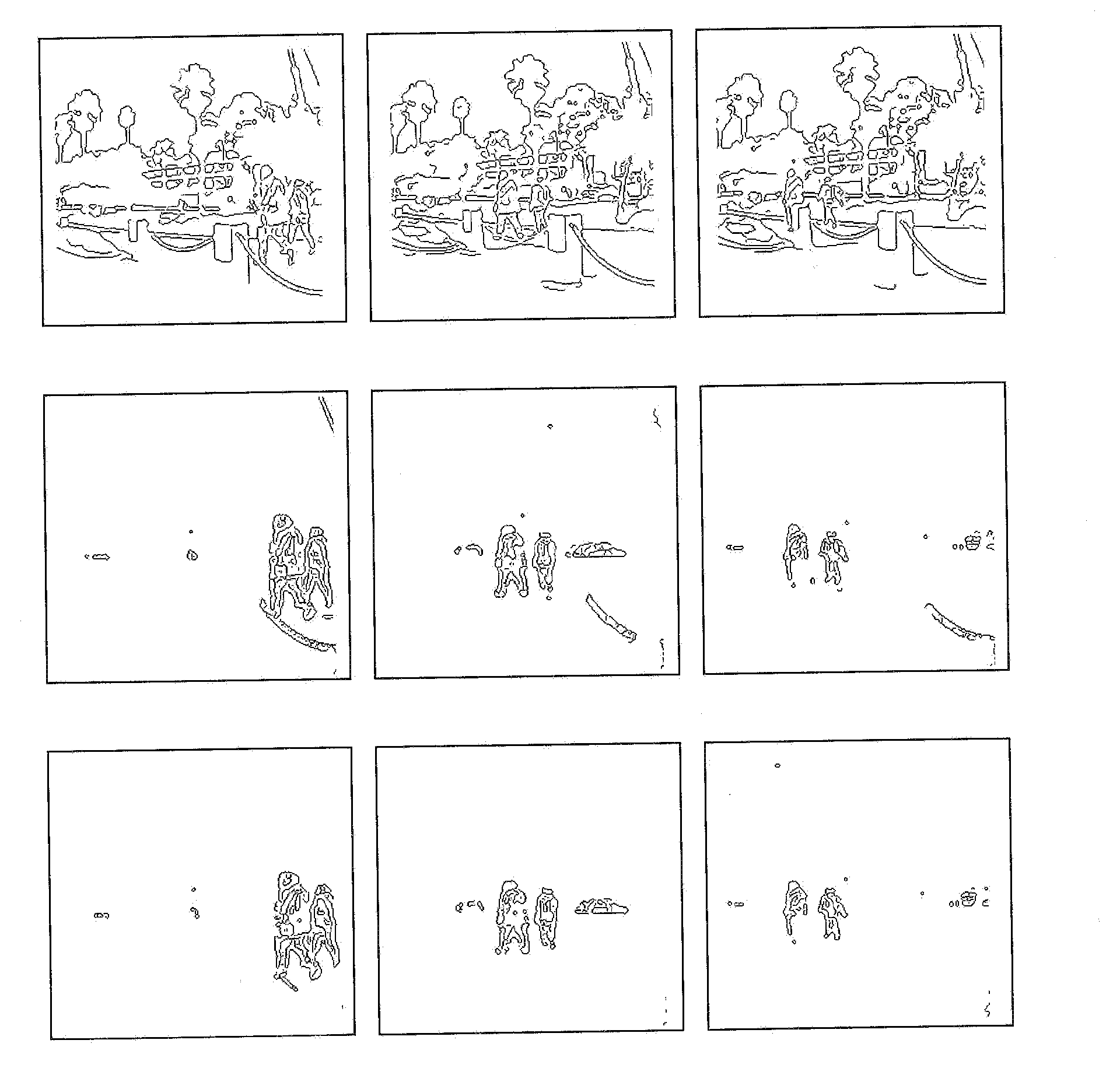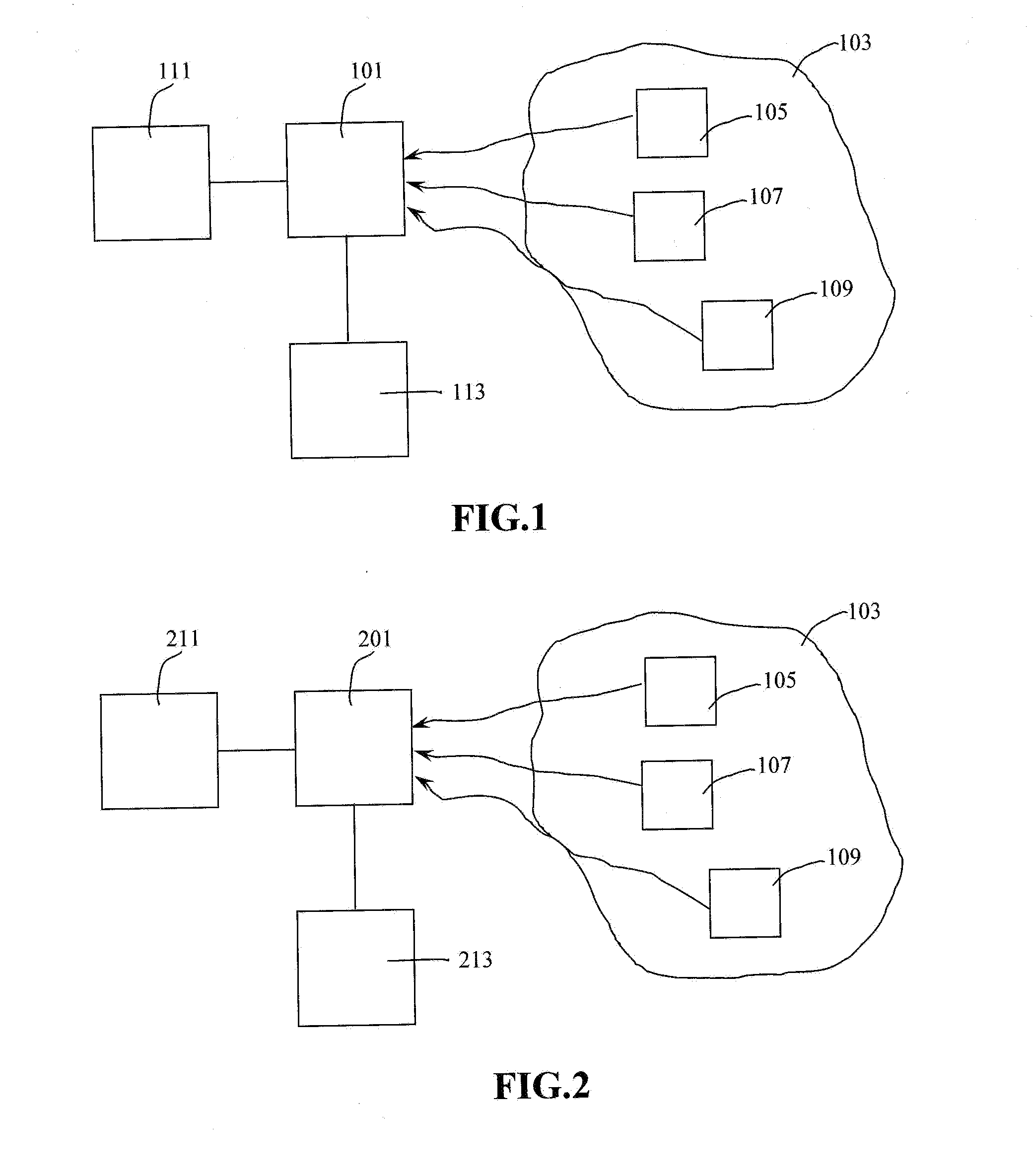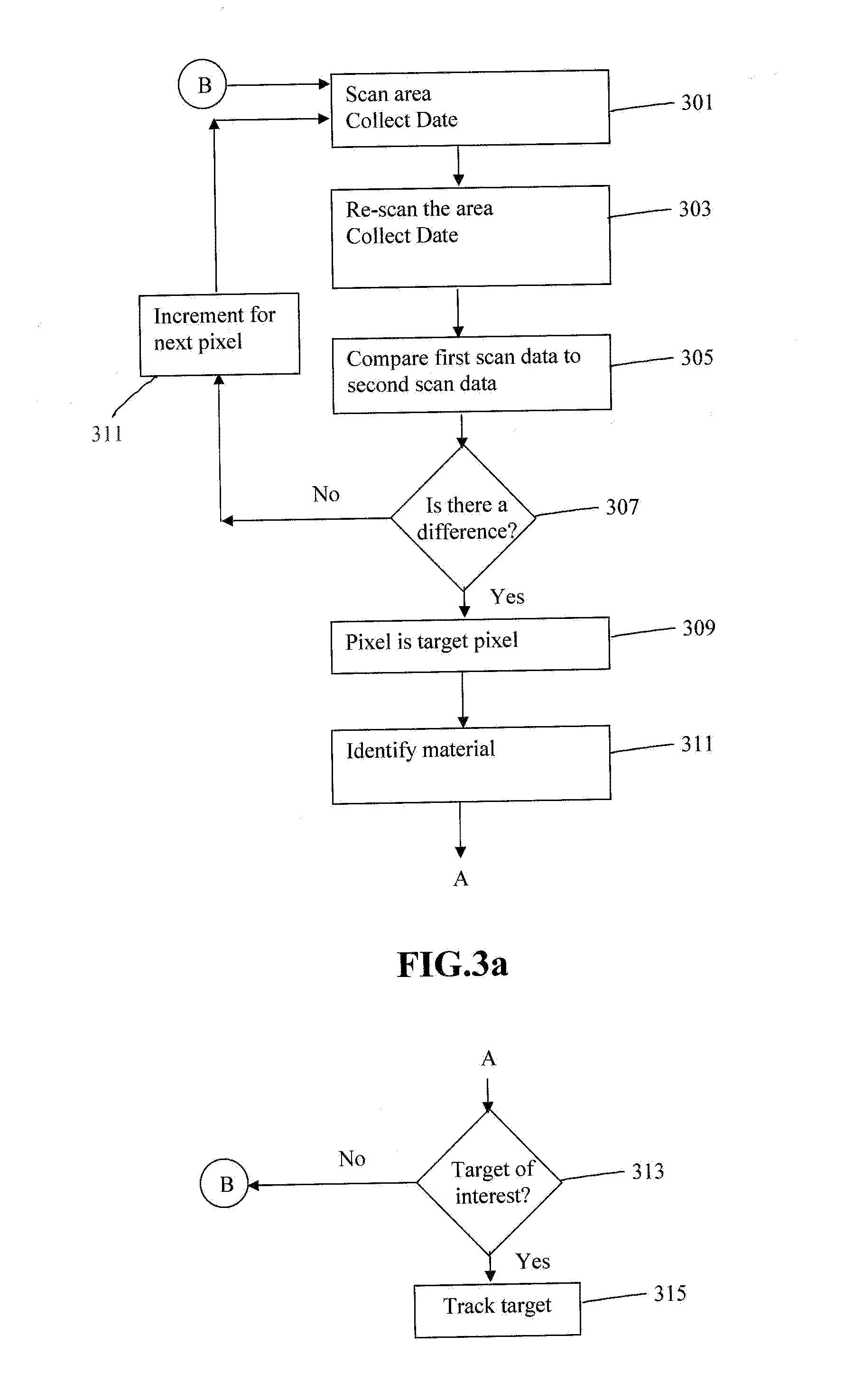Methods for Target Tracking, Classification and Identification by Using Foveal Sensors
a technology of target tracking and classification, applied in the field of target tracking, classification and identification by using foveal sensors, can solve the problems of low energy captured by each sensor-cell, multiple objects being captured in the same pixel, and becoming difficult to identify
- Summary
- Abstract
- Description
- Claims
- Application Information
AI Technical Summary
Benefits of technology
Problems solved by technology
Method used
Image
Examples
first embodiment
[0041]In this invention disclosure, using a spectral sensor for target detection and tracking based on the target spectral content change or variation is disclosed. The following general exemplary procedures are described for detecting and tracking a target via a spectral sensor 101.
[0042]FIG. 1 illustrates a spectral sensor 101 which may be positioned to scan a first predetermined area 103 which may include a first object 105, a second object 107 and a third object 109 which may be referred to as targets. The first object 105, the second object 107 and the third object 109 may be a vehicle, an animal, a human, a building, trees and bushes or other types of objects.
[0043]The sensor 101 performs a first scan at a first predetermined time over a wide predetermined area 103 to collect the first set of hyperspectral or multispectral data from at least the first object 105, the second object 107 and the third object 109 and which may be stored in a database 113.
[0044]The sensor 101 perfo...
second embodiment
[0052]In this invention disclosure as shown in FIG. 2, using for example a spectrally and spatially foveated multi / hyperspectral sensor 201 for target detection and tracking based on the spectral content change or variation of the target / object 105, 107, 109 is disclosed. The following procedures are for detecting and tracking a target / object 105, 107, 109 via such a spectrally and spatially foveated sensor 201. Exemplary approaches are suggested.
Detecting and Tracking a Moving Target by Using a Spectrally and Spatially Foveated Sensor
[0053]The sensor 201 monitors a wide area (wide FOV) in a first predetermined staring mode with programmable coarse and fine spatial resolution but without spectral scanning.[0054]The processor 111 which may be a sensor on-chip processor finds a moving target(s) 105, 107, 109 via the implemented algorithm, as described by J. T. Caulfield in Reference (2) which has been incorporated by reference in its entirety;
[0055]The sensor 201 by the processor 111 ...
PUM
 Login to View More
Login to View More Abstract
Description
Claims
Application Information
 Login to View More
Login to View More - Generate Ideas
- Intellectual Property
- Life Sciences
- Materials
- Tech Scout
- Unparalleled Data Quality
- Higher Quality Content
- 60% Fewer Hallucinations
Browse by: Latest US Patents, China's latest patents, Technical Efficacy Thesaurus, Application Domain, Technology Topic, Popular Technical Reports.
© 2025 PatSnap. All rights reserved.Legal|Privacy policy|Modern Slavery Act Transparency Statement|Sitemap|About US| Contact US: help@patsnap.com



